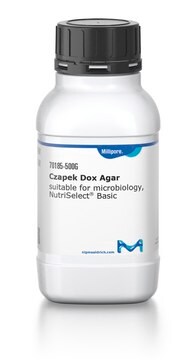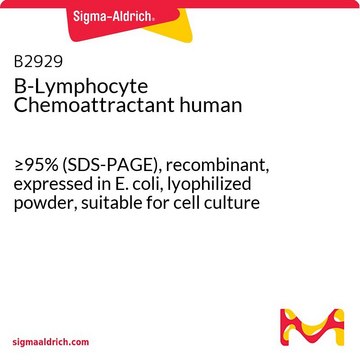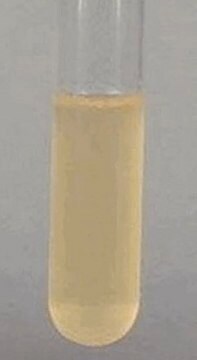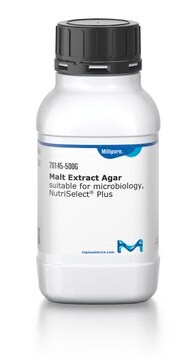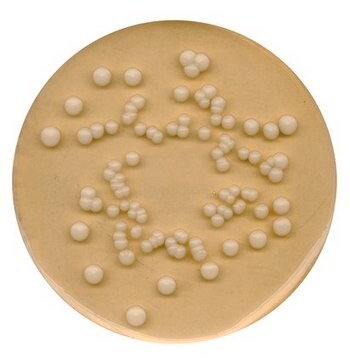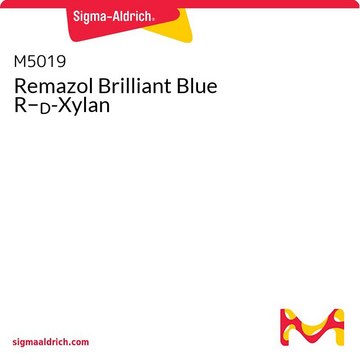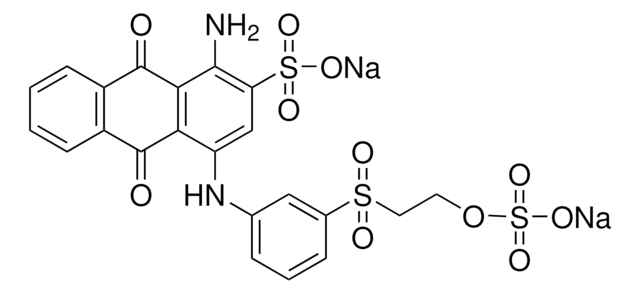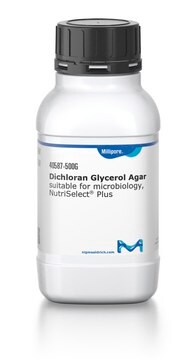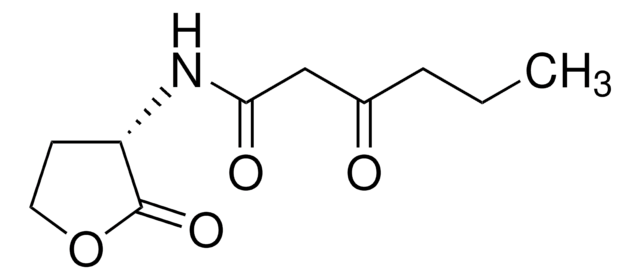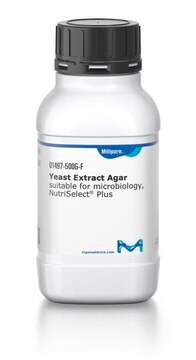Wszystkie zdjęcia(1)
Kluczowe dokumenty
C1551
Czapek-Dox broth
suitable for microbiology, NutriSelect® Basic
Zaloguj sięWyświetlanie cen organizacyjnych i kontraktowych
About This Item
Kod UNSPSC:
41171607
NACRES:
NA.85
Polecane produkty
sterylność
non-sterile
Poziom jakości
Formularz
powder
producent / nazwa handlowa
NutriSelect® Basic
metody
microbiological culture: suitable
Zastosowanie
bioburden testing
food and beverages
microbiology
przydatność
nonselective for Aspergillus spp.
nonselective for Candida spp.
nonselective for Saccharomyces spp.
nonselective for molds (General Media)
nonselective for yeasts (General Media)
Powiązane kategorie
Opis ogólny
Czapek-Dox Agar is a semi-synthetic broth used for the cultivation of fungi, containing sodium nitrate as the sole source of nitrogen.
Zastosowanie
Czapek-Dox broth has been used for culturing vegetative fugal mycelium, Aspergillus fumigatus strain 10AF and Verticillium albo-atrum.
Komponenty
Contains: Sucrose, sodium nitrate, dipotassium phosphate, magnesium sulfate, potassium chloride, ferrous sulfate.
Uwaga dotycząca przygotowania
Suspend 35.0 g/L in water, boil to dissolve the medium completely. Sterilize by autoclaving at 121°C for 15 minutes. Mix well and dispense as desired
Komentarz do analizy
Microbiologically tested.
Przypis
We offer two media types: the superior granulated GranuCult® and the cost-efficient powdered NutriSelect® culture media, depending on your needs.
The designations basic, plus, or prime are added to indicate the quality control level, from basic quality control to standard QC plus to prime for full regulatory compliance.
The designations basic, plus, or prime are added to indicate the quality control level, from basic quality control to standard QC plus to prime for full regulatory compliance.
Informacje prawne
GRANUCULT is a registered trademark of Merck KGaA, Darmstadt, Germany
NutriSelect is a registered trademark of Merck KGaA, Darmstadt, Germany
Ta strona może zawierać tekst przetłumaczony maszynowo.
Hasło ostrzegawcze
Warning
Zwroty wskazujące rodzaj zagrożenia
Zwroty wskazujące środki ostrożności
Klasyfikacja zagrożeń
Ox. Sol. 3
Kod klasy składowania
5.1B - Oxidizing hazardous materials
Klasa zagrożenia wodnego (WGK)
WGK 1
Temperatura zapłonu (°F)
Not applicable
Temperatura zapłonu (°C)
Not applicable
Wybierz jedną z najnowszych wersji:
Masz już ten produkt?
Dokumenty związane z niedawno zakupionymi produktami zostały zamieszczone w Bibliotece dokumentów.
Klienci oglądali również te produkty
Mapping genes for resistance to Verticillium albo-atrum in tetraploid and diploid potato populations using haplotype association tests and genetic linkage analysis
Simko I, et al.
Molecular Genetics and Genomics, 271(5), 522-531 (2004)
Saccharomyces as a vaccine against systemic aspergillosis:`the friend of man?a friend again?
Liu M, et al.
Journal of Medical Microbiology, 60(10), 1423-1432 (2011)
Lidia Błaszczyk et al.
Journal of applied genetics, 52(2), 233-243 (2011-04-06)
In the present study, we reinvestigate the diversity of Trichoderma in Poland utilizing a combination of morphological and molecular/phylogenetic methods. A total of 170 isolates were collected from six different substrata at 49 sites in Poland. These were divided among
Zhongming Zheng et al.
Environmental science and pollution research international, 10(3), 173-176 (2003-07-09)
Indigenous soil microorganisms are used for the biodegradation of petroleum hydrocarbons in oily waste residues from the petroleum refining industry. The objective of this investigation was to determine the potential of indigenous strains of fungi in soil contaminated with petroleum
Nasz zespół naukowców ma doświadczenie we wszystkich obszarach badań, w tym w naukach przyrodniczych, materiałoznawstwie, syntezie chemicznej, chromatografii, analityce i wielu innych dziedzinach.
Skontaktuj się z zespołem ds. pomocy technicznej